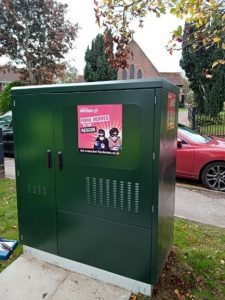Reading Time:
Posted on: November 7, 2022
If you are wondering ‘what is FTTC’, we know that you are not alone. We have had many residents and customers wanting to learn more and they always ask us what does it stand for.

FTTC stands for Fibre to the Cabinet. It describes the use of fibre-optic cables that lead from the exchange to the cabinet. The referred cabinet are those green boxes that you may see on your road or placed around your residential area.
A lot of companies use this current existing method of networking as it is what was originally installed when mass connection was rolled out. It is the foundations of connecting the nation through voice transmissions and phone calls.
See below a visual infographic explaining an FTTC connection from the exchange to your home:

Currently, 90% of UK residents have access to an FTTC connection meaning that they are able to receive some form of broadband (albeit a slow one).
FTTC is the first part of the network that results in your house being connected and it is currently what the majority of networks are made up of. The second part of the network is comprised of copper network cables which was the preferred method of transmitting telecommunications.
Copper cables are an excellent method of voice transmissions, but unfortunately, they are no longer tailored to keep up with the evolving digital landscape. The speeds they transmit simply can’t match the demands we need, especially given the recent shift in use of digital technology at home.
It was a revolutionary rollout when first implemented. However, the fact that in 1998, there were only 9% of households in the UK with access to the internet, in comparison to the 93% in 2019, means that it is time for a shift in our networking technology. This is where FTTP (Fibre to the Premise) comes into play.
The modern digital demand has increased significantly, especially given the COVID-19 pandemic revolutionizing the way we work, entertain and interact with each other. Having a full fibre connection (both FTTC & FTTP) is now imperative to keep up with our daily digital lives.
If you are interested in learning about the benefits of a full fibre connection, read our blog post to understand more.
If you are interested in upgrading to a faster broadband through a full fibre connection, check to see if your postcode fits into where we are building.